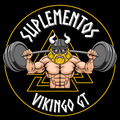Anatomically, skeletal muscles are a series of parallel, cylindrical fibers that contract to produce force. This muscular contraction allows all external human movement to occur. Your body is in a constant process of renewing and recycling the amino acids, or protein building blocks, in your muscles. If your body removes more protein than it adds, you will lose muscle mass. If net protein synthesis is uniform, there is no measurable change in muscle size. Finally, if your body deposits more protein than it removes, your muscles will grow.
The key to building muscle is increasing the rate of protein deposition while minimizing the rate of protein breakdown. This process of increasing muscle mass is known as muscle hypertrophy and is the primary goal of resistance training. The muscle-building process is driven by several factors, including hormones like testosterone and growth hormone, as well as the availability of amino acids and other nutrients. To build new muscle tissue, your primary tools for increasing your body's protein synthesis rate are resistance training and getting sufficient amounts of protein and nutrients in general.
The right amount of resistance training boosts your body's hormonal response toward building muscle, but it requires sufficient protein and energy availability to ensure the process results in muscle gain rather than loss. While researchers and experts continue to study the science of optimizing muscle gains, performing resistance training with moderate to heavy loads, combined with a relatively high protein intake, remains the only tried-and-true training method for increasing muscle mass.



Leave a comment